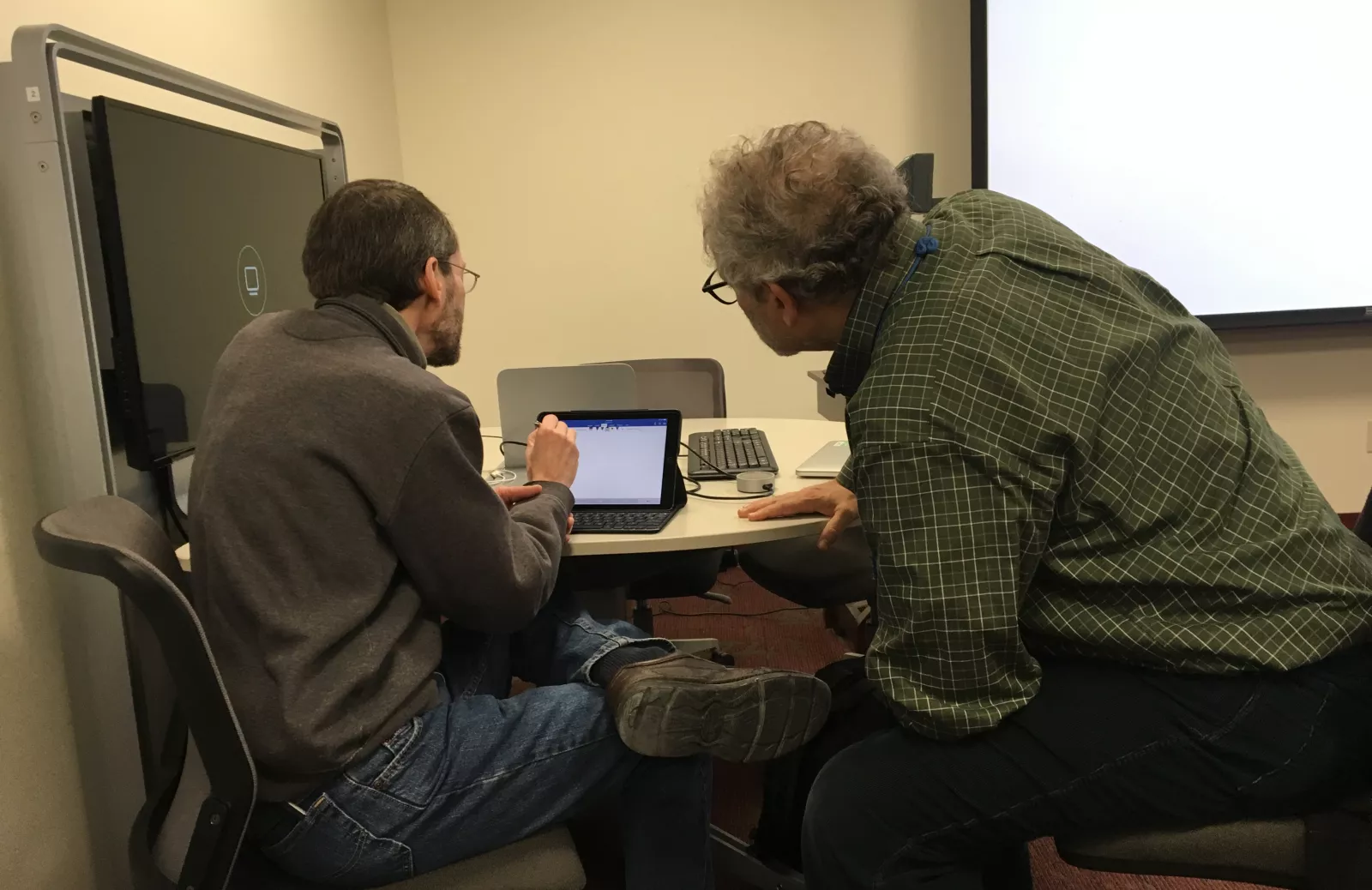
Shortly before the beginning of the semester, Bryn Mawr's Educational Technology Services hosted a workshop for faculty and staff focused on tech solutions for "writing on screen". The tech tools we shared during the workshop are alternatives to analog chalk-and-blackboard presentations, and can give teachers greater flexibility in presenting, saving, and sharing their writing. We also shared digital solutions for annotating and sharing student work that could serve as alternatives to hand-writing on printed out copies.
Why use digital tools for writing on screen?
Faculty participants in the writing on screen workshop imagined a variety of possible uses for the tablets and document cameras they tried out. Common examples include solving complex equations, drawing diagrams, and demonstrating how to annotate student work. Participants expressed interest in recording short videos in which their handwritten solutions to problems could be shared along with an audio walk-through, so that students could revisit problem solving techniques outside of class. Many of these tech tools also allow users with limited mobility to show their handwriting to an audience when they might not be able to do so using a traditional chalkboard or whiteboard.
Tablets: iPad Pro/Apple Pencil & Microsoft Surface/Surface Pen
During the workshop, faculty had the chance to experiment with two powerful touchscreen devices - the iPad Pro (with Apple Pencil) and the Microsoft Surface (with Surface Pen). Both tools are great options for marking up digital copies of documents and for projecting and recording handwritten work. If you've used a tablet with a stylus in the past, you might have experienced difficult-to-control, clumsy writing that was frustrating and hard to read. The new stylus technology for both of these tablets offers a much more natural experience with high-quality results.
The iPad Pro runs iOS apps, with many options including the Microsoft Office Suite, interactive whiteboard apps like Explain Everything and ShowMe, and Apple's native Notes app. Several faculty attendees shared their positive experiences using the iPad Pro to record short instructional videos and to annotate student papers. We especially like this device for apps like Explain Everything and the iOS version of Microsoft Word.
The Microsoft Surface is more like a touchscreen laptop than a traditional tablet. It runs a full version of Windows, which allows you to use the software you might use on a PC with the added benefit of a responsive touchscreen. We like the Surface particularly for OneNote and for the familiar feel of the applications you might be used to using on a laptop or desktop computer.
Document Cameras: IPEVO
In addition to the more expensive, full-featured tablets, we offered faculty participants at the workshop the chance to try out lightweight, portable document cameras made by IPEVO. These document cameras may seem familiar to anyone who used an overhead projector to project transparencies; the difference is that these small cameras record anything below their lens and project it live on your computer screen. We could imagine using these devices to show students anything from handwritten equations to annotated papers to even a lab experiment. IPEVO cameras can be used with a desktop app to make video recordings of anything captured by the camera. We recommend these document cameras as a less expensive, simple-to-use option for anyone looking to stick with paper and pen and gain video capture and presentation functionality.
***
If you're a professor at Bryn Mawr and would like to try out one of these devices, we can help you get set up! Contact us through the Help Desk and ask for an educational technology consultation.